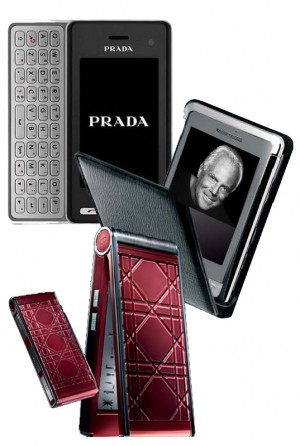 DALLAS, Jun 18, 2010 / FW/ — Invented by Alexander Graham Bell in 1876, it took less than a century for the prototype, a single-port design requiring the user to alternately speak into and then listen through the same hole, for the telephone to turn mobile.
DALLAS, Jun 18, 2010 / FW/ — Invented by Alexander Graham Bell in 1876, it took less than a century for the prototype, a single-port design requiring the user to alternately speak into and then listen through the same hole, for the telephone to turn mobile.
It was on April 3, 1973 when Motorola manager Martin Cooper placed a cellular phone call (in front of reporters) to Dr. Joel S. Engel, head of research at AT&T’s Bell Labs. This began the era of the handheld cellular mobile phone.
Today, 37 years later, 9 out of 10 Americans have cell phones and talking isn’t all that matters, according to a research conducted by BIGresearch® for the National Retail Federation.
According to the survey, nearly nine out of 10 adults (87.5%) say they have a cell phone, an increase of 17.9 percent from January 2006 (74.2%).
With e-commerce now expanding to m-commerce, many people want the luxury of being able to shop or browse company’s websites from their phone. The survey found 41.5 percent of adults want a cell phone with internet access, compared to just under one-third (32.6%) who said so in July 2008.
Early adopters of m-commerce are Gucci and Ralph Lauren, who since 2008 have had their e-commerce sites already available via cell phones.
“Americans expect more from their phones than the ability to talk to family and friends,” said NRF President and CEO Matt Shay.
“Aside from sending pictures and sharing stories and experiences over social networking sites, consumers want to be able to connect with their favorite retailers in a way they never have been able to before – instantaneously. The emergence of m-commerce has created a paradigm shift that has the retail industry very excited.”
Still, talking and shopping are not the only attractions of the smart phones. More than half (51.4%) of adults 18-34 years old say they want to be able to surf the web on their phone, compared to the 41.0 percent who said so in July 2008.
When it comes to other cell phone features or attributes, adults say email access has also increased in importance over the years. Over half (51.1%) of 18-34 year-olds say they want a cell phone with email access, up from 28.1 percent in January 2006.
But young adults aren’t the only ones who favor email access: according to the survey, 42.6 percent of all adults want email on their phone, up significantly from 22.5 percent four years ago.
Survey respondents also said that phones with cameras (59.0%), calendars (42.7%) and text messaging (55.6%) are important attributes.
To say that cell phones had become ubiquitous is an understatement. The same way that its great grandfather, the 1876 single-port design by Alexander Graham Bell revolutionized the way people communicated during the 19th century, the cell phone is changing the way we consume information, shop and of course communicate during the 21st century.
[MARI DAVIS]



